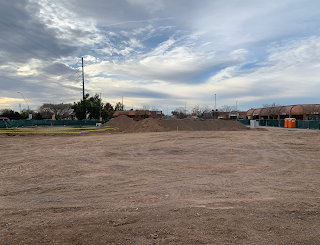The destruction of farmland in the Phoenix, Arizona area
I live in Glendale, Arizona (a suburb of Phoenix) and have never really given much thought to farms. But research that I have done recently about the history of the Salt River Project is teaching me that it was originally all about farms, not suburbia.
If you live anywhere in the greater Phoenix area, you may be surprised to know that the ground that your house, the streets, the malls, and the parking lots are on is some of the most fertile soil in the world. And the Salt River Valley sits at the bottom of one of the largest natural watersheds on the planet. Like the Nile Valley in Egypt, this area has been flooded for thousands of years, bringing in not only water, but rich soil. And when the Federal program of land reclamation began, most notably with the Roosevelt Dam in 1911, it was all about taking advantage of that generous amount of water and fertile land to create farms.
People who lived in the valley, from the Hohokam to the Phoenix pioneers, knew that. And so the old-timers must have been saddened to see this precious farmland destroyed by being covered over with asphalt.
Yes, there are thousands of miles of desert land in Arizona that looks pretty much the same as the Salt River Valley. But it's only there that the combination of the incredibly fertile soil and steady water supply from the watershed northeast creates the potential for an oasis.
Thank you to my patrons on Patreon who help support History Adventuring! If you like these blog posts, and would like to make suggestions for future ones, please become a patron.
Become a Patron!




Comments
Post a Comment